MARKET OVERVIEW
The Western Europe Snack Bar market is a flourishing industry that caters to the diverse tastes and preferences of consumers across the region. This sector encapsulates a broad spectrum of snack bars, ranging from traditional favorites to innovative and health-focused options. As consumers increasingly seek convenient and on-the-go food solutions, the Western Europe Snack Bar market has emerged as a prominent player in the ever-changing landscape of the food industry.
The Western Europe Snack Bar market revolves around providing consumers with a convenient and satisfying snacking experience. These bars come in various forms, including energy bars, granola bars, protein bars, and cereal bars, each tailored to meet specific nutritional requirements and taste profiles. The market's diversity reflects the multifaceted nature of consumer demands, spanning indulgence, health-consciousness, and convenience.
In recent years, the Western Europe Snack Bar market has witnessed a surge in demand for healthier alternatives, driven by a growing awareness of nutrition and well-being. Consumers are increasingly looking for snack options that not only satiate their hunger but also contribute positively to their overall health. This trend has led to the introduction of snack bars featuring natural ingredients, superfoods, and functional components, appealing to those seeking a balance between taste and nutrition.
The Western Europe Snack Bar market is characterized by intense competition, with both established players and innovative startups vying for consumer attention. Brand differentiation is crucial in this competitive landscape, as companies strive to create unique selling propositions that resonate with their target audience. The market is not only about meeting basic dietary needs but also about creating an emotional connection with consumers, leveraging factors such as sustainability, ethical sourcing, and transparent manufacturing processes.
One noteworthy aspect of the Western Europe Snack Bar market is its adaptability to cultural nuances and regional preferences. While some consumers may prefer classic flavors and textures, others may seek out exotic and bold combinations. This diversity is a testament to the market's ability to cater to a wide array of taste preferences, making it a vibrant and responsive segment within the broader food industry.
The Western Europe Snack Bar market stands as a testament to the evolving nature of consumer preferences and the adaptability of the food industry. With its wide range of offerings, from indulgent treats to health-conscious options, this market continues to shape the way people snack in the region. As consumers prioritize convenience without compromising on taste and nutrition, the Western Europe Snack Bar market is poised to play an integral role in the culinary landscape of the region, offering a diverse array of choices that cater to the diverse and ever-changing tastes of consumers.
Western Europe Snack Bar market is estimated to reach $5021.7 Million by 2031; growing at a CAGR of 5.2% from 2024 to 2031.
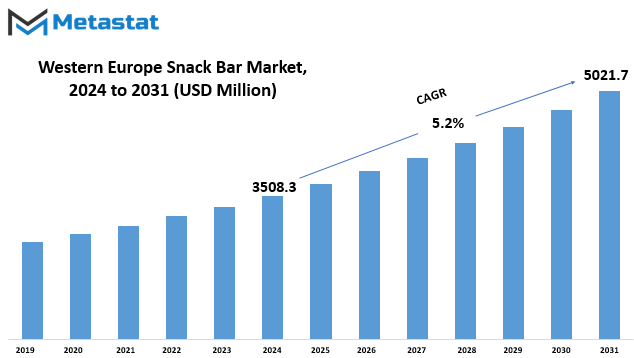
GROWTH FACTORS
The Western Europe Snack Bar market is currently experiencing significant growth, driven by several key factors. These factors play a crucial role in shaping the market landscape, contributing to its expansion. However, it's essential to acknowledge potential challenges that could hinder this growth. Additionally, exploring emerging opportunities promises a positive outlook for the market in the years to come.
One of the primary drivers propelling the growth of the Western Europe Snack Bar market is the evolving consumer preference for convenient and on-the-go food options. With the fast-paced lifestyles that have become characteristic of the modern era, individuals are increasingly seeking snacks that are not only tasty but also easy to consume while on the move. Snack bars, with their portability and diverse flavor profiles, perfectly cater to this demand, driving their popularity among consumers.
Moreover, the growing awareness and emphasis on health and wellness are influencing snack choices. Consumers are now more conscious of their dietary habits, preferring snacks that offer nutritional benefits without compromising taste. Snack bars have adapted to this trend by incorporating healthier ingredients and positioning themselves as a wholesome snack option. This shift in consumer behavior has significantly contributed to the rising demand for snack bars in the Western European market.
Another pivotal factor contributing to market growth is the continuous innovation in product offerings by manufacturers. The snack bar market has witnessed the introduction of a variety of flavors, textures, and ingredient combinations, aiming to captivate diverse consumer preferences. This constant innovation not only attracts new consumers but also retains the interest of existing ones, fostering sustained market growth.
However, it's crucial to acknowledge potential challenges that might impede the growth of the Western Europe Snack Bar market. Economic uncertainties and fluctuations in raw material prices can pose obstacles for manufacturers, affecting production costs and, subsequently, product pricing. Additionally, stringent regulations and compliance requirements in the food and beverage industry may pose challenges for market players, requiring them to navigate complex regulatory landscapes.
Despite these challenges, the Western Europe Snack Bar market is poised to capitalize on lucrative opportunities in the coming years. The increasing focus on e-commerce and online retail channels presents a promising avenue for market expansion. As consumers embrace online shopping for convenience, snack bar manufacturers can leverage digital platforms to reach a wider audience and enhance their market presence.
The Western Europe Snack Bar market is currently propelled by factors such as changing consumer preferences, a heightened focus on health and wellness, and continuous product innovation. While challenges like economic uncertainties and regulatory complexities exist, the market is well positioned to harness opportunities presented by the growing trend of online retail. The future of the Western Europe Snack Bar market appears promising, provided market players navigate challenges effectively and capitalize on emerging opportunities.
MARKET SEGMENTATION
By Product Type
In the bustling market of Western Europe's Snack Bars, a diverse array of products caters to the varied tastes and preferences of consumers. The Snack Bar market, a dynamic landscape shaped by consumer demands and trends, is segmented based on product types, offering a spectrum of choices that includes Protein Bars, Granola Bars, Energy Bars, and a miscellaneous category known as Others.
The Granola Bars category, holding a significant place in the market, emerged as a formidable player with a valuation of 1109.5 USD Million in 2022. Its popularity can be attributed to the wholesome and crunchy nature of granola, making it a favored choice for those seeking a satisfying yet nutritious snack option.
In parallel, the Energy Bars segment carved its niche with a value of 942.6 USD Million in 2022. These bars, designed to provide a quick and convenient energy boost, have gained traction among consumers leading active lifestyles or seeking a swift refueling option during hectic days.
The market landscape doesn't stop at these two giants. The Others segment, valued at 392 USD Million in 2022, encompasses a variety of snack bars that don't fall under the specific categories of Granola or Energy Bars. This diverse category caters to individuals with unique taste preferences, offering an assortment of options to explore beyond the more conventional choices.
What makes the Snack Bar market fascinating is its ability to evolve and adapt to the ever changing consumer landscape. In understanding the dynamics of this market, it becomes evident that consumer preferences drive product innovation and diversity. As consumers become more health-conscious, the market responds by introducing snack bars with added proteins or other nutritional benefits.
Moreover, the convenience factor plays a pivotal role in the popularity of snack bars. In a fast-paced world, where time is a valuable commodity, the portable and ready-to-eat nature of snack bars aligns seamlessly with the on-the-go lifestyles of many consumers. Whether it's a quick energy boost before a workout or a satiating snack between meals, snack bars have become a reliable and versatile choice.
The growth and segmentation of the Western Europe Snack Bar market underscore the importance of understanding consumer needs and preferences. Market players must stay attuned to these dynamics, consistently innovating to meet the evolving demands of a diverse consumer base. The success of the Granola Bars, Energy Bars, and Others segments reflect not only the market's responsiveness but also the adaptability of snack bars to the varying tastes and lifestyles of consumers across Western Europe.
By Retail Pack
In the Western Europe Snack Bar market, the segmentation by Retail Pack plays a pivotal role in understanding consumer preferences and market dynamics. This segmentation categorizes the market based on the weight of snack bars, providing valuable insights into the choices made by consumers and the corresponding market values.
The Less than 30 Grams segment stands out as a significant market player, valued at 709.1 USD Million in 2022. This lightweight category appeals to consumers looking for quick, on the-go snacks that are both convenient and satisfying. The appeal of snack bars in this weight range is evident, as reflected in the market valuation.
Moving into the 30 to 55 Grams segment, we observe a substantial market value of 1657 USD Million in 2022. This weight category strikes a balance between the lightness of smaller bars and the heartiness of larger ones, catering to consumers with varying hunger levels and preferences. The growth in this segment underlines the diverse needs of snack enthusiasts and the market's ability to adapt to these demands.
The 55 Grams Above segment completes the trio, having been valued at 842.8 USD Million in 2022. This category caters to individuals seeking a more substantial snack, perhaps as a meal replacement or a more substantial energy boost. The higher valuation of this segment reflects the demand for larger-sized snack bars in the market, addressing the preferences of those who prioritize satiety and nutritional value.
The segmentation by Retail Pack not only provides a comprehensive view of consumer behavior but also offers strategic insights for industry players. It enables manufacturers and marketers to tailor their products to specific weight preferences, ensuring that they align with the diverse needs of their target audience.
The success of snack bars in Western Europe is undoubtedly linked to their versatility and adaptability to various consumer preferences. The market's responsiveness to different weight categories reflects a consumer-driven demand for convenience, variety, and nutritional value. As individuals lead increasingly busy lives, the snack bar market capitalizes on the need for portable, flavorful, and satisfying options.
The Western Europe Snack Bar market's segmentation by Retail Pack unveils a nuanced understanding of consumer choices across different weight categories. The Less than 30 Grams, 30 to 55 Grams, and 55 Grams Above segments collectively contribute to the market's vibrant tapestry, showcasing the industry's ability to cater to diverse preferences. As the market continues to evolve, this segmentation remains a valuable tool for stakeholders to navigate the ever-changing landscape and stay attuned to the pulse of consumer demands.
By Flavors
Snack bars have become an integral part of our daily lives, offering a convenient and quick solution for those moments when hunger strikes. These portable, ready-to-eat treats have gained immense popularity, meeting the demand for on-the-go nourishment. In this essay, we'll explore the various aspects of the snack bar market, focusing on flavors and geographical distinctions.
Flavors play a crucial role in shaping the snack bar landscape. The market is not a monolithic entity but rather a diverse array of tastes catering to different preferences. Chocolate, Peanut Butter, Coconut, Fruity, and Others (Oatmeal, Almond, Mint, Lemon, etc.) represent the spectrum of choices available to consumers. This diversity reflects the dynamic nature of consumer preferences, ensuring that there is a snack bar flavor for every taste bud.
Moving on to geographical distinctions, the Western Europe Snack Bar market provides an interesting lens through which to view regional variations. Geographical factors often influence dietary habits and flavor preferences. In Western Europe, the snack bar market is shaped by a unique blend of cultural influences and consumer behaviors. Understanding these nuances is essential for businesses aiming to thrive in this specific market.
The Chocolate-flavored snack bars, for instance, might find a more receptive audience in countries where chocolate is deeply ingrained in culinary culture. Peanut Butter and Coconut flavors could resonate differently, tapping into diverse taste preferences within the region. The Fruity category, with its wide range of fruit-infused options, adds a refreshing twist, appealing to those seeking a burst of natural sweetness.
Beyond the flavors, the Others category, encompassing Oatmeal, Almond, Mint, Lemon, and more, caters to individuals with a penchant for unconventional tastes. This segment reflects the industry's acknowledgment of the need for innovation, ensuring that snack bars remain exciting and versatile.
Geography also influences distribution patterns, as regional preferences shape the demand for specific flavors. A successful strategy in one Western European country may require adjustments to align with the unique tastes of another. Therefore, businesses operating in this market need to adopt a nuanced approach that considers the cultural and flavor landscapes of each region.
The snack bar market, characterized by its diverse flavors and regional distinctions, exemplifies the dynamic nature of consumer preferences. The Chocolate, Peanut Butter, Coconut, Fruity, and Others categories offer a rich tapestry of choices, catering to a wide range of tastes. Meanwhile, the Western Europe market provides a fascinating case study, showcasing how geography influences flavor preferences and, consequently, market dynamics. As snack bars continue to evolve and adapt to changing consumer demands, understanding these nuances becomes paramount for businesses seeking success in this ever-growing and competitive industry.
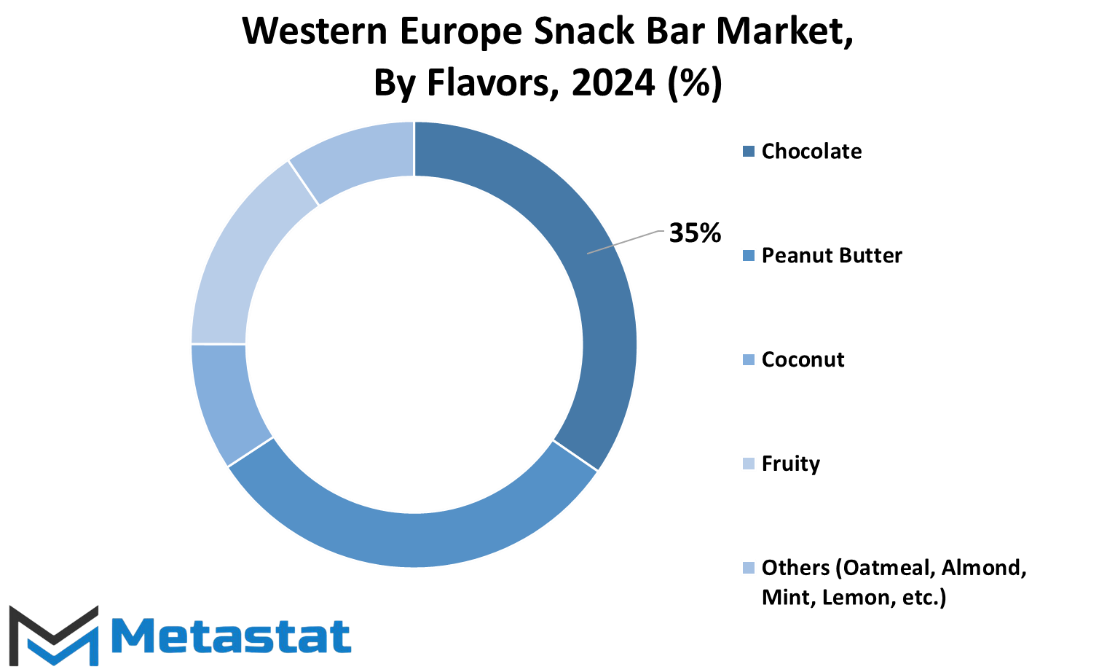
By Distribution Channel
In Western Europe, the Snack Bar market is segmented based on its distribution channels, encompassing Supermarkets and Hypermarkets, Convenience Stores, Online Retail, and others. Supermarkets and Hypermarkets stand out as the go-to spots for many consumers. These large retail spaces offer a wide array of snack bars, catering to diverse tastes and preferences. The convenience of finding everything in one place makes supermarkets and hypermarkets a convenient choice for snack enthusiasts.
Convenience Stores play a crucial role in the Snack Bar market as well. These compact outlets offer quick and easy access to a variety of snack options, making them a popular choice for consumers on the go. Convenience stores excel in providing a swift solution for those in need of a tasty and convenient snack without the time for a full shopping trip.
Online Retail has become an increasingly significant player in the Western Europe Snack Bar market. With the rise of e-commerce, consumers now have the option to explore and purchase snack bars from the comfort of their homes. The convenience of doorstep delivery adds an extra layer of appeal, attracting those who prefer a hassle-free shopping experience.
The category labeled as Others captures various distribution channels that contribute to the Snack Bar market. These channels may include specialty stores, local markets, or other unconventional avenues where consumers can discover and purchase snack bars. This diverse category reflects the evolving landscape of snack distribution, accommodating different consumer needs and preferences.
The Western Europe Snack Bar market, it becomes evident that the distribution channels play a pivotal role in shaping the snack consumption habits of the region's populace. The accessibility and convenience offered by supermarkets and hypermarkets, the on-the-go nature of convenience stores, the digital convenience of online retail, and the unique offerings from other channels collectively contribute to the vibrant Snack Bar market.
Supermarkets and Hypermarkets, with their vast selection and one-stop-shop appeal, cater to a broad audience. Convenience Stores, in their compact and easily accessible form, meet the needs of those seeking quick and effortless snacking solutions. Online Retail, with its digital storefronts, caters to the tech-savvy consumers who value the convenience of virtual shopping. The "Others" category, encompassing various unconventional channels, adds a layer of diversity to the market, ensuring that snack bars are available through a myriad of avenues.
The Western Europe Snack Bar market's distribution channels reflect the dynamic nature of consumer preferences and shopping habits. The combination of traditional brick-and-mortar establishments, the growing influence of online retail, and the unique offerings from other channels collectively contribute to a thriving market where snack enthusiasts can find their favorite treats through various accessible means.
REGIONAL ANALYSIS
The Snack Bar market in Western Europe is a significant player in the regional economy, influencing both consumer choices and the overall business landscape. A closer look at the regional analysis sheds light on the market's dynamics and trends, offering valuable insights for businesses and consumers alike.
Geographically, Western Europe serves as a diverse and vibrant backdrop for the Snack Bar market. The region's cultural richness and economic variations contribute to the diverse preferences and demands of consumers. From the bustling streets of London to the serene landscapes of rural France, the Snack Bar market navigates through a tapestry of tastes and preferences.
France, Germany, the United Kingdom, and Spain emerge as key players in shaping the Snack Bar market in Western Europe. These countries, with their unique culinary traditions and cultural influences, dictate the trends and choices within the market. For instance, the French penchant for artisanal and gourmet snacks contrasts with the British fondness for convenient and on-the-go options. These distinctions create a dynamic market environment, prompting Snack Bar manufacturers to tailor their offerings to suit local preferences.
Consumer behavior plays a pivotal role in shaping the Western Europe Snack Bar market. With an increasingly health-conscious populace, there is a growing demand for snacks that balance taste and nutritional value. This shift in consumer preferences has spurred innovation within the Snack Bar industry, leading to the development of healthier and more wholesome options.
The Snack Bar market in Western Europe also reflects broader societal trends. The rise of urbanization and the fast-paced lifestyle of modern cities have contributed to the popularity of convenient and portable snack options. As individuals juggle work, travel, and leisure, the demand for snacks that are not only delicious but also easy to consume on the go has surged.
Furthermore, the influence of social media and digital platforms cannot be overlooked. Western European consumers, like their counterparts around the world, are increasingly influenced by online trends and recommendations. This digital influence shapes the perception of Snack Bars, driving the popularity of certain brands and flavors. Manufacturers, in turn, leverage social media platforms to engage with consumers, create brand awareness, and introduce new products.
Economic factors also impact the Western Europe Snack Bar market. The purchasing power of consumers, inflation rates, and overall economic stability influence spending patterns. In times of economic uncertainty, consumers may opt for more affordable snack options, while during periods of prosperity, there may be an increased willingness to experiment with premium and gourmet offerings.
The Western Europe Snack Bar market is a dynamic and multifaceted arena influenced by geographical, cultural, economic, and social factors. As consumers seek a balance between taste and health, and as digital platforms continue to shape preferences, the Snack Bar industry in Western Europe adapts to meet evolving demands. Understanding these regional dynamics is crucial for businesses looking to thrive in this ever-changing market landscape.
COMPETITIVE PLAYERS
The Snack Bar industry in Western Europe has witnessed significant growth in recent years, with several key players making notable contributions. Among the prominent companies operating in this market are Mars, Incorporated, Nestlé S.A., Kellogg Company, General Mills, Inc., The Hershey Company, Clif Bar & Company, Quest Nutrition, LLC, Associated British Foods PLC, PepsiCo Inc, and Post Holdings Inc (POWERBAR).
Mars, Incorporated, a well-established player, has been a frontrunner in the Snack Bar market. Their commitment to quality and innovation has contributed to their success. Nestlé S.A. is another major contender, with a diverse portfolio of snack bars catering to various consumer preferences. Their focus on nutrition and taste has solidified their position in the industry.
Kellogg Company, renowned for its breakfast cereals, has also made a mark in the Snack Bar sector. Leveraging their expertise in creating wholesome and flavorful products, they have garnered a substantial market share. General Mills, Inc., known for its global presence, has successfully extended its influence to the Snack Bar market, offering a range of options to consumers.
The Hershey Company, a name synonymous with chocolate, has expanded its reach into the Snack Bar segment, introducing delectable and convenient options. Clif Bar & Company, recognized for its energy bars, has carved a niche in the market by catering to the nutritional needs of health conscious consumers. Quest Nutrition, LLC, with a focus on protein-packed bars, has gained popularity among fitness enthusiasts.
Associated British Foods PLC, a diversified company, has not only made a mark in the food and beverage industry but has also ventured into the Snack Bar market, adding variety to consumer choices. PepsiCo Inc, a global giant, has successfully translated its expertise in snacks to the Snack Bar sector, offering a wide array of options to meet diverse tastes.
Post Holdings Inc, particularly through its POWERBAR brand, has become a significant player in the Western Europe Snack Bar market. Their commitment to providing energy-boosting bars has resonated with consumers looking for quick and nutritious snacks. Each of these key players brings a unique set of offerings, contributing to the vibrant and competitive landscape of the Snack Bar industry in Western Europe.
The growth of the Snack Bar market can be attributed to changing consumer lifestyles and preferences. Busy schedules and on-the-go lifestyles have led to an increased demand for convenient and portable snack options. The key players in the industry have recognized this trend and have adapted their product portfolios, accordingly, introducing a variety of flavors, nutritional profiles, and packaging formats to cater to diverse consumer needs.
The Western Europe Snack Bar market is characterized by the presence of key players who have successfully navigated the evolving consumer landscape. Through a combination of innovation, quality, and diverse product offerings, these companies have contributed to the growth and dynamism of the Snack Bar industry in the region. As consumer preferences continue to evolve, the key players are likely to adapt and introduce new offerings, ensuring the continued expansion and competitiveness of the Snack Bar market in Western Europe.
Snack Bar Market Key Segments:
By Product Type
- Protein Bars
- Granola Bars
- Energy Bars
- Others
By Retail Pack
- Less than 30 Grams
- 30 to 55 Grams
- 55 Grams Above
By Flavors
- Chocolate
- Peanut Butter
- Coconut
- Fruity
- Others (Oatmeal, Almond, Mint, Lemon, etc.)
By Distribution Channel
- Supermarkets and Hypermarkets
- Convenience Stores
- Online Retail
- Others
Key Western Europe Snack Bar Industry Players
- Mars, Incorporated
- Nestlé S.A.
- Kellogg Company
- General Mills, Inc.
- The Hershey Company
- Clif Bar & Company
- Quest Nutrition, LLC
- Associated British Foods PLC
- PepsiCo Inc
- Post Holdings Inc (POWERBAR)
WHAT REPORT PROVIDES
- Full in-depth analysis of the parent Industry
- Important changes in market and its dynamics
- Segmentation details of the market
- Former, on-going, and projected market analysis in terms of volume and value
- Assessment of niche industry developments
- Market share analysis
- Key strategies of major players
- Emerging segments and regional growth potential



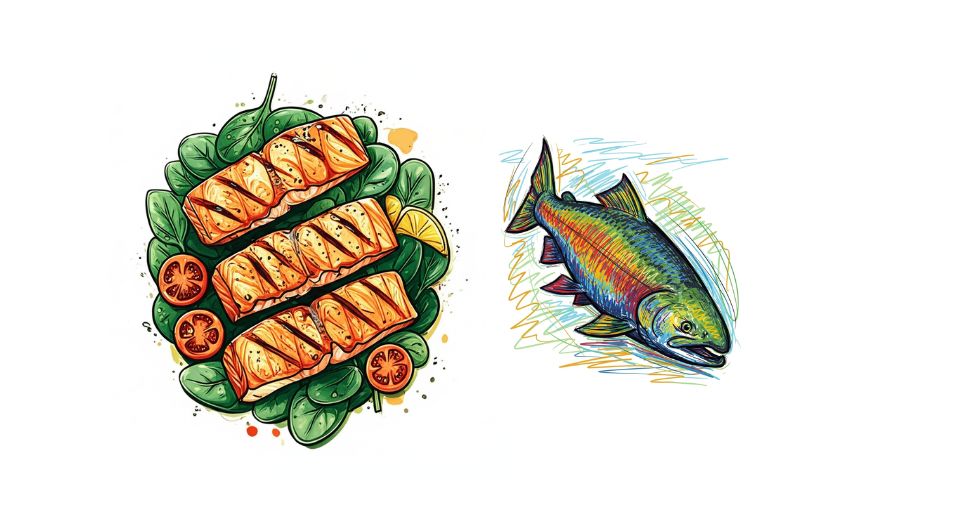
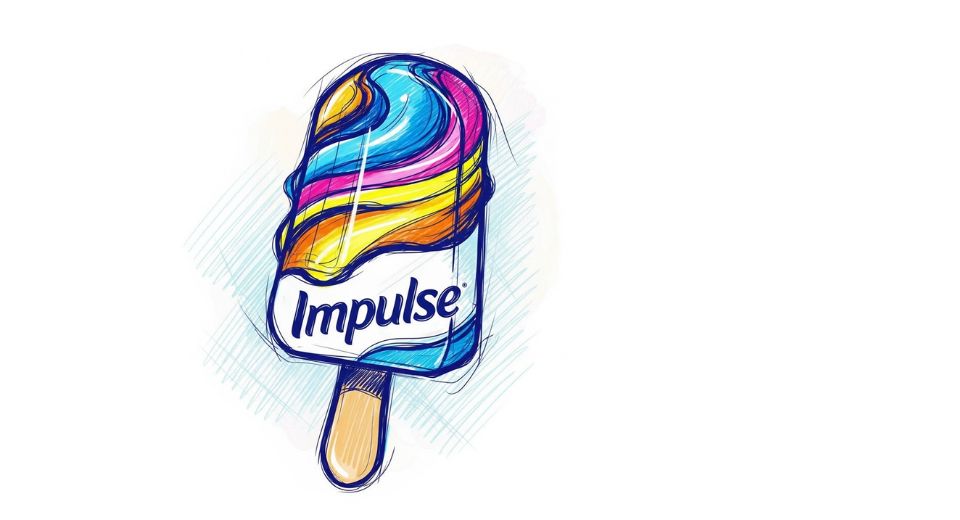

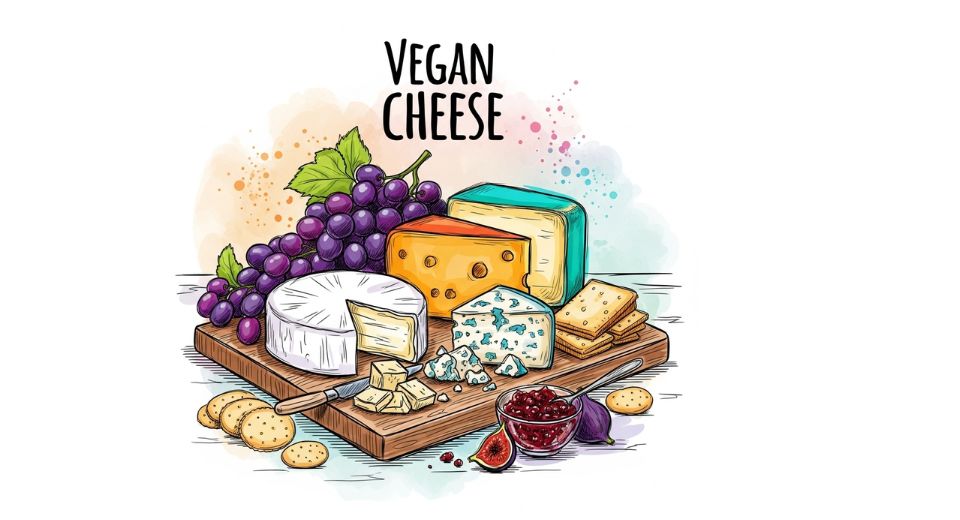

 US: +1 3023308252
US: +1 3023308252






